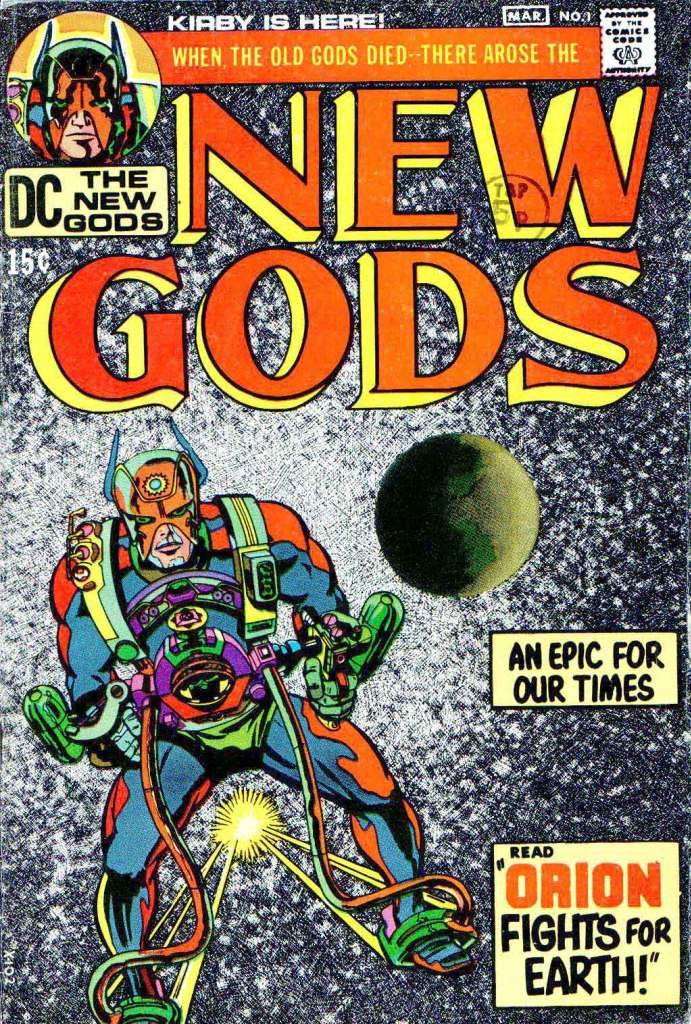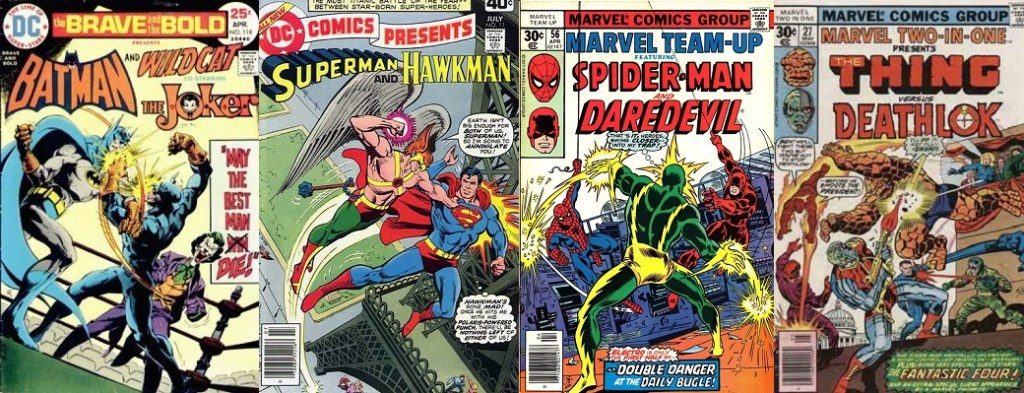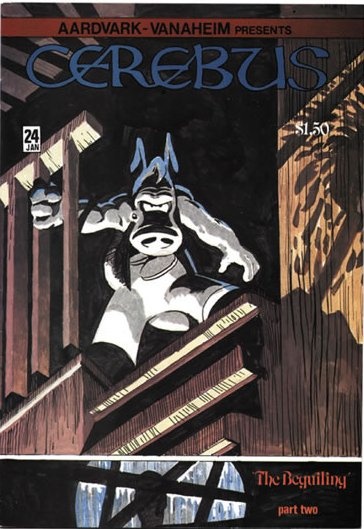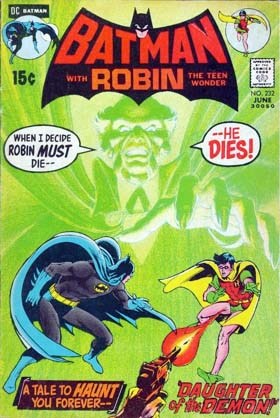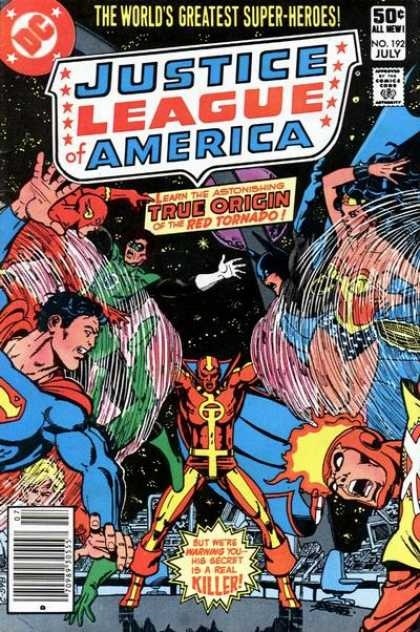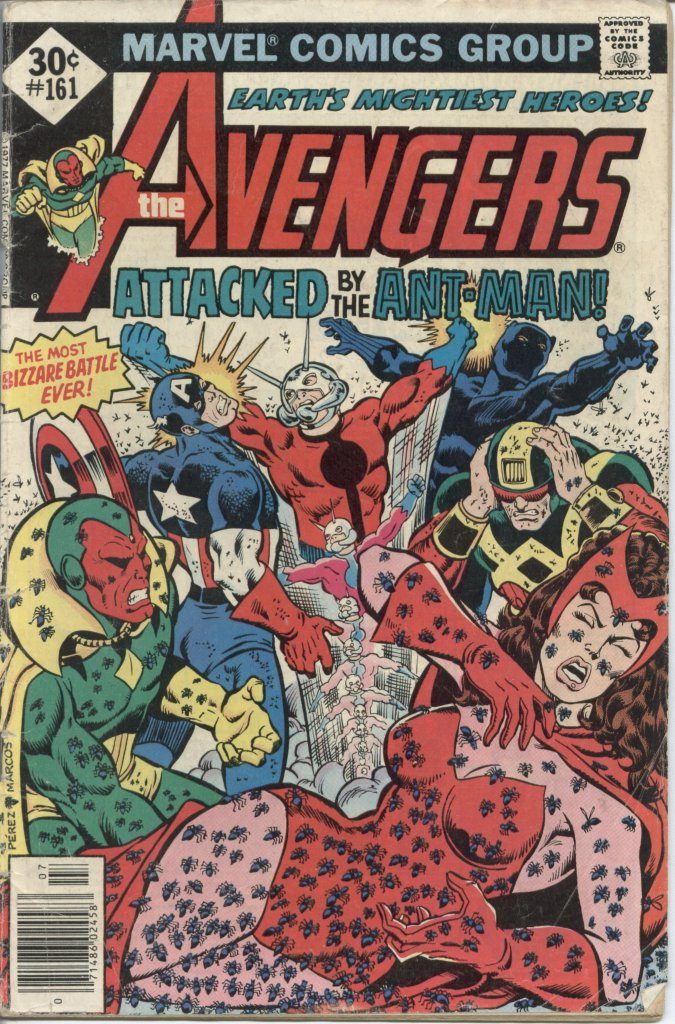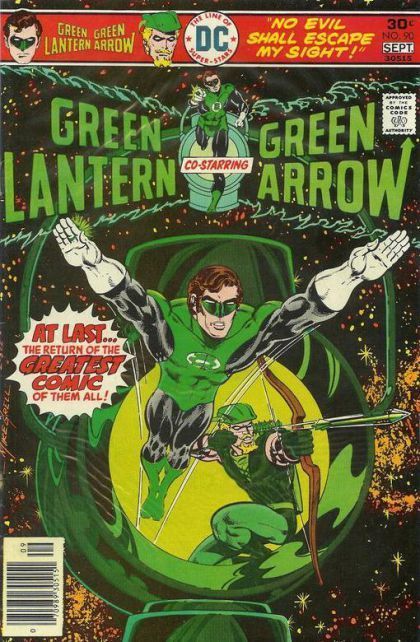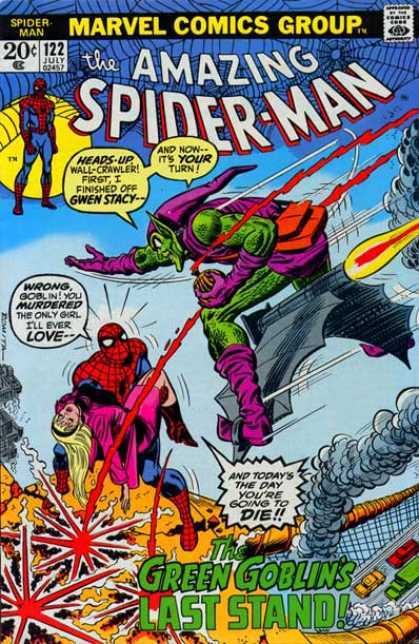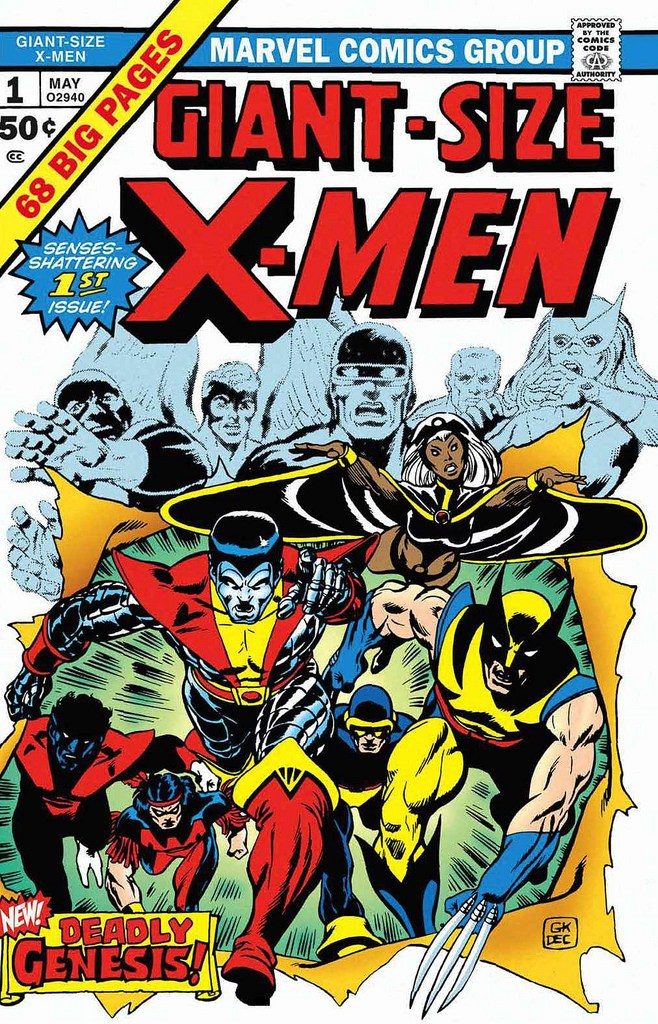Graphic Design and Typography
Illustration
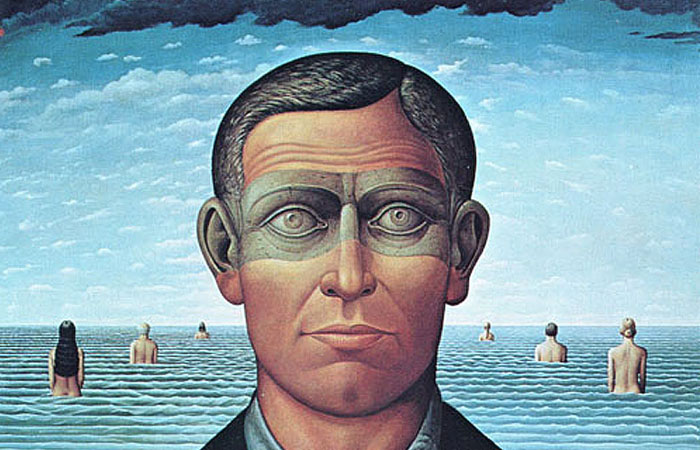
Illustration (detail) above: “Memory” by Richard Hess
In the second half of the 20th Century, America’s expanded middle-class consumer society demanded entertainment, and all media were growing exponentially. The music, movie, and publishing industries were becoming stronger than ever. The post-war generation began their professional careers, and those interested in art and design had many kinds of employment opportunities in publishing, advertising, and with corporations—from insurance companies to fashion houses.
The Society of Illustrators in New York City, formed at the beginning of the 20th Century as an elite men’s club, is an important professional organization which sponsors public exhibitions of the best contemporary and historic original illustration art. The annual juried competition is open to any practicing illustrator, from well-established pros, to up-and-coming young artists doing their first work. At “the Society” original works of illustration art were being exhibited regularly in the 1970s and were being seen by larger numbers of people, especially students of illustration at art schools. Also, examples of award-winning published work were being shown in the trade magazines and provided young artists with inspiration to enter the field.
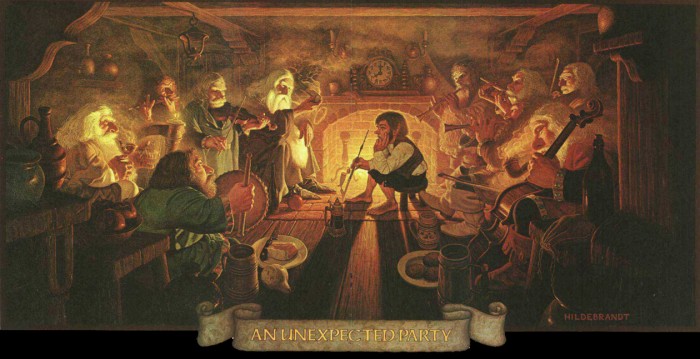
Tim and Greg Hildebrandt, Tolkien Calendar, 1978
The publishing of J.R.R. Tolkien’s The Hobbit and Lord of the Rings in the mid-1950s led fantasy literature to be reborn after a long sleep—since Victorian England’s love of fantasy and the freshly retold and illustrated fairy tales of the early 20th Century. The long-established genre of science fiction often included fantasy tales, but it wasn’t until the late 1960s that young people fully latched on to reading about fully developed fictional worlds like Tolkien’s “middle-earth” and the imagined histories of medieval-inspired cultures populated with wizards, dragons, knights and princesses, trolls, goblins, elves, fairies, and unicorns. Writers began to generate fantasy novels, which were treated with beautifully illustrated covers. Jim Henson’s studio in the early 1980s produced very popular fantasy films like The Dark Crystal, which benefitted from character drawings by artists who specialized in fantasy, like Brian Froud, himself influenced by Arthur Rackham and the Swedish artist John Bauer. In 1972 the film, Star Wars, brought together familiar worlds of medieval-like cultures, gave them advanced technologies, and pitted their knights against militant cultures bent on universal domination. The film’s combination of science fiction and fantasy was irresistible and its advanced production techniques, model making, animatronic figures, painted scenic, and adventure plot line made it immensely popular with the public and a broad influence to writers and artists. Teams of illustrators helped the director to visualize the characters and sets with their drawings, enlarging what had previously been a small sub-field for artists: character and scenic design for films. This grew to become today’s “concept art,” which is a major area of interest and opportunity for illustrators.
Fantasy games began as an outgrowth of the fantasy movement in popular culture. With illustrated board games, role-playing fantasy card games, video games, and then—with the development of the personal computer—computer games, there was a range of new media requiring illustration. This expanded the employment opportunities of illustrators who no longer had to rely solely on the publishing industry’s books and magazines for commissions.
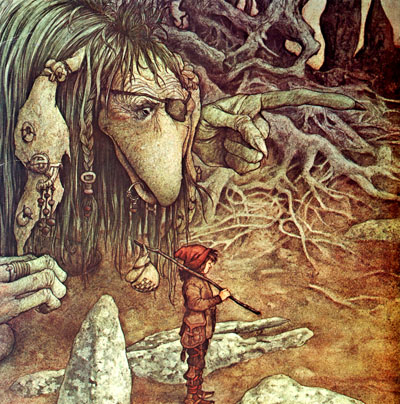
Brian Froud, The Dark Crystal
The recording industry grew in the 1970s, and illustrated album covers provided a dynamic twelve-by-twelve inch format for illustration. Mati Klarwein’s two-panel, two foot wide fold-out cover painting for Miles Davis’ album, Bitches Brew, changed the way that people thought of album art. Music magazines took a firm hold, with Rolling Stone and Crawdaddy leading the field and hiring illustrators to portray musicians, writers, entertainers, and political personalities, generating a revived interest in and enjoyment of caricature and celebrity portrait illustration. Playboy and other men’s magazines commissioned the top illustrators of the day for the short fiction they published, attracting international artists to their pages. Illustrators from England, France, Germany, and Eastern Europe were being commissioned by American art directors. Magazines were published in international versions exposing more people than ever to illustration of all kinds and styles.
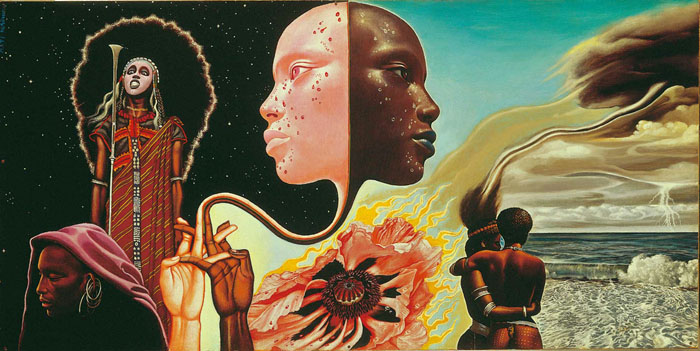
Mati Klarwein, album art, Bitches Brew, 1970
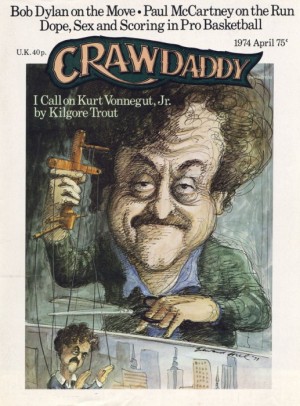
Edward Sorel, Crawdaddy magazine, 1974
With the post-war generation beginning to raise families, there was also an increase in books published for children, especially “picture books,” where the story is brief with its words carefully designed and where the illustrations provide a world for the child to enter and enjoy. The masterful Maurice Sendak, Alice and Martin Provensen, and Eric Carle were joined by a host of new artists entering that field including Swiss-born Etienne Delessert.
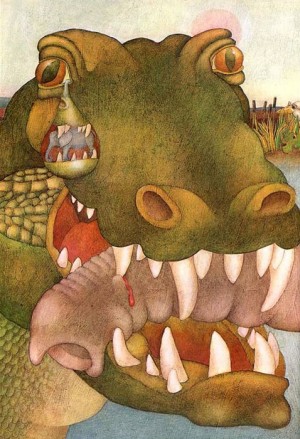
Etienne Delessert, Just So Stories by Rudyard Kipling, 1972
The New York Times made a bold move to bring illustration to its editorial pages. Other papers used political cartoons, but the Times either commissioned or bought conceptual illustration, meant to illustrate the ideas and opinions of its “Op-Ed” page articles and letters as in the illustration below by Brad Holland. Using metaphor, allusion, and symbolism, this art led readers to think more deeply about political and social issues.
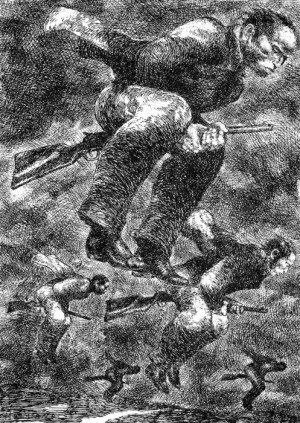
Brad Holland, The New York Times, “Firing Squad”
Under all of these influences young artists wanted more than ever to become illustrators, and art schools were ready to oblige them with training. There were numerous ones to choose from and a variety of approaches to education that might suit their needs—private art schools, art colleges, part-time evening programs in Continuing Education with a selection of courses in illustration, and even full illustration programs leading to BFAs—with most courses being taught by working professionals sharing their knowledge and experience. Parsons School of Design, the School of Visual Arts, and Pratt Institute in New York City all had full or part-time illustration programs, as did other schools around the country, like the Rhode Island School of Design, Art Center College of Design in Pasadena, the Art Institute of Boston, and the Philadelphia College of Art.
Comics
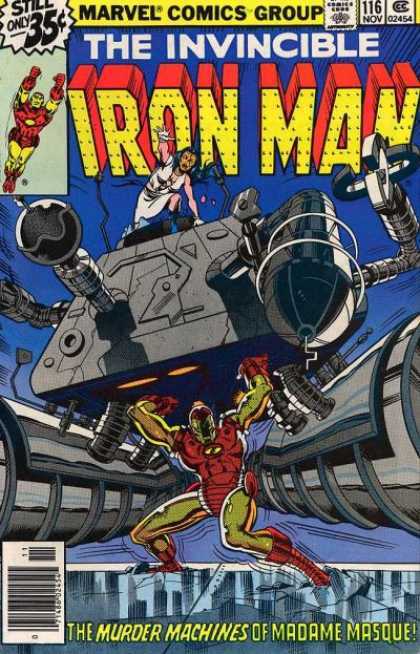
David Michelinie, Bob Layton, and John Romita Jr took Iron Man to new heights as well as a huge personal low in 1978. The art was slick and Iron Man looked sharp and shiny. The massive low was that Tony took a turn for the worst; he became an alcoholic. It was subject a that was frowned upon at the time. Yet it embraced a new level for Stark and 70’s comics in whole. As a side note Jim Starlin created Thanos, Mentor, and Drax the Destroyer during his 70’s run on Iron Man as well.
Jack Kirby
How could Jack Kirby not make our list? If you know comics you know Kirby. In the early 70’s Kirby left Marvel for DC. Kirby had one of the most successful runs in comics history. So you would think he could do it again? Of course! The New Gods, The Demon, Kamandi, and Mister Miracle. Some of these characters haven’t really stood the test of time like The Hulk or Iron Man, but it’s important footnote that Kirby left in his legacy and a great time for DC.
Team-Up Books
The 70’s saw a rush of team-up books. The first big hit was the Brave and the Bold which had been in print since the 50’s. Brave and the Bold normally teamed Batman up with some unlikely heroes and sometimes even villains. Marvel Team Up was the next title. It teamed Spider-Man with many other heroes. Marvel Two-in One was the book featuring the Thing in his various team-ups. Finally DC Comics Presents was Superman hanging out with other heroes to stop crime. The team-up books were fun and mostly a guilty pleasure, but also kind of a pain. They would change writers and artists constantly. If you think about it, most of the heroes were fighting villains that they normally could handle on their own anyways, so two heroes actually made it harder on the villains. The team trend went up and down for several decades later.
Dave Sim’s Cerebus
In 1977 Dave Sim’s Cerebus came out as a self published comic by Aardvark-Vanaheim. Dave used Cerebus (who was an anamorphic Aardvark) to convey Dave’s controversial beliefs. The art was black /white and very detailed. The series ran for a solid 300 issues.
Batman had been around since 1937. You would think that he had been played out. In 1970 Dennis O’Neil created one of the Batman’s greatest villains of all, Ra’s al Ghul. Neal Adams brought him to life with realistic pencils that hadn’t been seen in comics before. Batman needed a new look and a face lift really bad and this did the trick. The 60’s Batman was fun and savvy but really a lot of BAM, POW and blah. Batman needed to be the Dark Knight he was meant to be which is what we finally started to get.
Several new artists came out of the 70’s, but none really knew how to put 20 superheroes on one page like George Perez. Team books were struggling and George Perez was the answer. He helped bring the Justice League to a new maturity that was deeply needed. It also lead to our next positive. This version of the Justice League was my Justice League: Batman, Superman, Wonder Woman, Green Lantern, Flash, Black Canary and a grumpy Green Arrow.
George Perez also worked on the Avengers. He made Ultron look like the character we all know from Avengers: Age of Ultron.
Green Lantern/Green Arrow
Dennis O’Neil and Neal Adams created the Green Lantern/Green Arrow team up. Green Lantern was a space cop with a magic ring and Green Arrow was just a guy with a bow and arrows, however, they were played as a republican (GL) and a democrat (GA) teaming up to examine the socio-economic problems in America.
Spider-Man
Like Batman, Spider-Man needed an edge that was missing. He had been around since 1963 and you would think they had done everything with the character they could at that time. So then in Amazing Spider-Man #122, Roy Thomas decided to kill off Spidey’s girlfriend, Gwen Stacy. Killing characters in the comics was almost unheard of for the time, yet here went Gwen, with her father having been killed off not long before. It is said that this is when the Golden Age ended and Spider-Man was never the same again. Spider-man also bears the legacy of having been the first mainstream super hero comic to ignore the comics code authority and published an issue concerning drug addiction. GreenLantern/Green Arrow followed suit, and within a decade the comics code had very little remaining authority.
The Uncanny X-Men
In the 1970’s, Marvel cancelled the X-Men. No body cared about our poor mutants by the point. Then in 1975, Giant Sized X-Men #1 hit the stands. It starred new characters including Colossus, Storm, Nightcrawler, Thunderbird, and brought in some little runt originally introduced in Hulk #181, Wolverine. The X-Men were a huge hit again. Mutants were now a thing. John Byrne made iconic images in every page he penciled during his run. Chris Claremont begin one of the longest run on any comic to date.
Animation
Animation for the grown-up market: Best example – Ralph Bakshi – Wizards, the Lord of the Rings
Animation in Europe: European market expected child-friendly television programs from animation. Best example – Viki the Viking
Short animation at film festivals became the way for animators to showcase their abilities. Best example: Russian animator, Yuri Norstein Battle of the Kerjenets
Animated music videos: best example: Elvis Costello, Accidents Will Happen
Japanese animation became popular in the American market. Best example: Battle of the Planets
Film
Directors
James Leo Herlihy for Midnight Cowboy
Franklin J Schaffner for Patton
William Friedkin for the French Connection
Francis Ford Coppola for The Godfather
Personalities
Film Score
Francis Lai for Love Story
John Williams for Jaws, Star Wars, and Close Encounters
Popular Entertainment
Special Effects
Sound Design – Ben Burtt
Visual Effects
The Poseidon Adventure – L.B Abbott A.D. Flowers
Jaws
Star Wars:
Film Editing: Star Wars Richard Chew, Paul Hirsch, and Marcia Lucas
Verna Fields Film editing for Jaws
Art Direction, Editing, etc for All the President’s Men
Cinematography
Screenwriting
William Peter Blatty for the Exorcist
Oliver Stone for Midnight Express
Advertising
Poloroid – It’s So Simple Bill Bernbach
Life Cereal – Hey Mikey – Doyle Dane Bernbach
Burger King – Have it Your Way – BBDO
Budwiser – There is no Other One – D’Arcy Masius Benton & Bowles
Coca Cola – The Real Thing – McCann-Erickson
Coca Cola – I’d Like to Teach the World to Sing – McCann-Erickson (Mad Men ending
